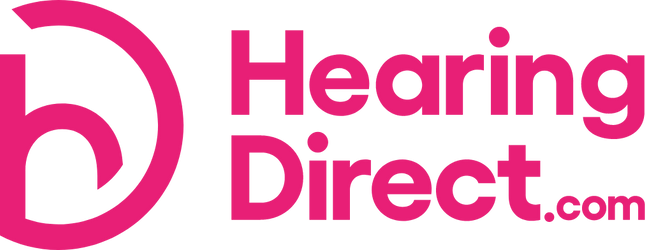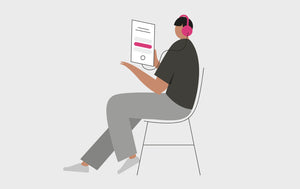What is Unilateral Hearing Loss?
What is Unilateral hearing loss? This is when you have hearing problems on one side only and normal hearing on the other side. Other names for it are unilateral deafness or asymmetrical hearing loss. In this blog post, we explain what the condition is, the causes, and how to treat and manage the problem.
What Is Unilateral Hearing Loss?
Unilateral hearing loss (UHL) is defined as a loss of hearing in one ear and not the other. The other ear remains unaffected and the person can hear as normal. Another term you may come across is asymmetrical hearing loss, which is when both ears have a problem but the hearing loss is worse on one side.
Unilateral Hearing Loss Causes
The actual cause may be difficult to diagnose as it is a more complicated condition than Bilateral Hearing Loss (deafness in both ears). But the following are possible causes of Unilateral Hearing Loss:
- Head trauma - seek immediate medical attention
- Sudden Sensorineural Hearing Loss - seek immediate medical attention
- Meniere's disease
- Waardenburg syndrome
- Labyrinthitis
- Meningitis
- Mumps
- Cerebellopontine angle tumors (usually benign)
Early diagnosis is important and a medical professional, ENT doctor or audiologist should be able to shed more light on your condition.
Unilateral Deafness Warning Signs
There are a number of warning signs to look out for with UHL:
- Muffled hearing in one ear
- Ringing in one ear and not the other
- Difficulty hearing conversations from one side
- Difficulty understanding speech particularly when there is background noise
As a result of some of the above symptoms, suffers may become irritable, experience headaches or feel more isolated than usual. Therefore, we strongly recommend that if you have any of the above signs, you check your hearing and see a licensed audiologist.
Managing Unilateral Hearing Loss
Once the severity and type of hearing loss has been diagnosed, you can then look at treating and managing the condition. Sometimes CROS or Bone Anchored/Conduction Hearing Aids can be recommended in cases of severe unilateral hearing loss.
Digital hearing aids are a popular way to effectively manage mild to moderate hearing loss. For instance, the Signia Silk 1Nx Digital Hearing Aid is an almost invisible, in-the-ear device.
Hearing Direct supplies a wide selection of affordable hearing aids. Our devices are designed to help you better manage mild to moderate impairments. Therefore they have a range of features designed to reduce outside noise and maximise clarity. Additionally, most of the hearings aids we provide are programmable to match your audiogram, giving tailored amplification just for you. We also focus heavily on price and pride ourselves on the affordability of our products.
Check Your Hearing
To check for any impairment, take our free online hearing test. Each ear is testing individually so you will get an idea of your hearing capacity in each ear.
You can take the test in the comfort of your own home and your results will indicate if you need to take action to prevent further damage. However, this test should not replace a professional audiological examination from a licensed healthcare practitioner.
About Hearing Direct
We are one of the world's leading hearing aid specialists. HearingDirect offers a wide range of affordable products, and information resources to help improve the quality of life for the hard of hearing. We sell:
- Hearing aids,
- Batteries,
- Accessories such as earplugs,
- and amplified devices such as super loud alarm clocks and amplified phones.
Like and chat to us on our facebook page
Author: Joan McKechnie

After qualifying as a Speech-Language Pathologist and Audiologist Joan has spent most of her 20 year career in hearing-care related roles. She has a wealth of experience within the hearing aid and hearing rehabilitation fields and has worked in manufacturing environments with two hearing aid companies helping to develop products and roll out new technologies. Joan has been involved with Hearing Direct since its launch and enjoys the online retail environment which seeks to provide easier access to hearing products and accessories. She is HCPC registered. Read Joan's full bio here.



